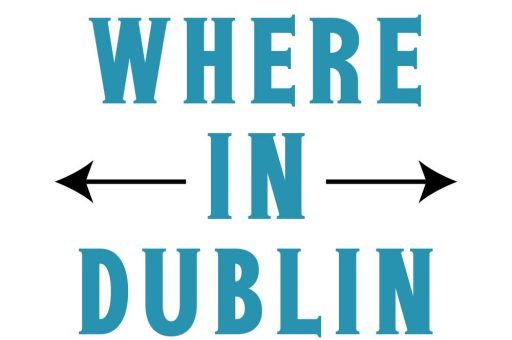Northern Ireland often sparks curiosity and confusion. Many wonder whether it’s part of the United Kingdom, a separate country, or something else entirely. The answer might seem simple at first, but the history, politics, and geography make it a bit more complex. Let’s break it down and make it easy to understand.
Let’s Understand Northern Ireland: Geography and Basics
Northern Ireland is located on the northeastern part of the island of Ireland. It shares a border with the Republic of Ireland to the south and west, while the rest of the island is independent. The remaining borders are coastlines along the Atlantic Ocean and the Irish Sea.
The total area of Northern Ireland is about 14,130 square kilometers, making it smaller than the Republic of Ireland and significantly smaller than Great Britain. Its capital city is Belfast, known for its rich industrial history, maritime heritage, and cultural landmarks.
Northern Ireland and the UK: Political Connection
Yes, Northern Ireland is part of the United Kingdom. The United Kingdom (UK) consists of four countries:
- England
- Scotland
- Wales
- Northern Ireland
From my own personal experience, people outside the UK often confuse the terms “UK” and “Great Britain.” Great Britain refers to the main island containing England, Scotland, and Wales, while the UK includes Northern Ireland, even though it’s on a separate island.
Northern Ireland has its own unique political system within the UK. It has a devolved government, meaning it can make decisions on local matters like health, education, and infrastructure. However, defense, foreign affairs, and immigration remain under the UK government’s control.
A Brief History of Northern Ireland’s Status
To understand why Northern Ireland is part of the UK, we need to look at its history.
Early History: The island of Ireland was historically independent but experienced waves of settlement, invasions, and English influence over centuries.
The 1920s Partition: After a period of political conflict and calls for Irish independence, the island was divided in 1921. The southern part became the Irish Free State (now the Republic of Ireland), while the northeastern counties remained part of the UK.
The Troubles: From the late 1960s to 1998, Northern Ireland experienced a violent conflict known as “The Troubles,” involving political, ethnic, and religious divisions. The Good Friday Agreement in 1998 helped establish peace and reinforced Northern Ireland’s status within the UK, while giving it a devolved government.
Northern Ireland’s Relationship with the Republic of Ireland
Though part of the UK, Northern Ireland shares a unique relationship with the Republic of Ireland. The two regions have an open border, which allows people, goods, and services to move freely.
From my own personal experience, this border often surprises visitors. You can cross from one country to the other without noticing any customs checks, reflecting the strong cooperation after decades of conflict.
Citizens in Northern Ireland can also hold Irish or British citizenship, or both, giving them flexible identities and rights across the UK and EU.
Cultural Identity in Northern Ireland
Northern Ireland is culturally diverse. People identify in different ways:
Unionists generally identify as British and support remaining part of the UK.
Nationalists generally identify as Irish and may favor joining the Republic of Ireland in the future.
Others may simply identify as Northern Irish, focusing on shared local identity rather than national politics.
This mixture of identities shapes the region’s festivals, music, sports, and everyday life. From my own personal experience, visiting Northern Ireland shows a unique blend of British and Irish influences, from food and language to music and public holidays.
Northern Ireland’s Economy and Role in the UK
Northern Ireland contributes to the UK economy in several ways:
Industry: Belfast remains a hub for shipbuilding, engineering, and technology.
Agriculture: Farming and food production are significant, especially in rural counties.
Tourism: Attractions like the Giant’s Causeway, Titanic Belfast, and historic castles bring international visitors.
Being part of the UK also means Northern Ireland benefits from national programs like healthcare (NHS), education funding, and infrastructure projects, while maintaining some autonomy in local affairs.
Northern Ireland Post-Brexit
The UK’s departure from the European Union brought new challenges for Northern Ireland. Unlike the rest of the UK, Northern Ireland continues to follow some EU regulations to keep trade smooth with the Republic of Ireland. This arrangement, known as the Northern Ireland Protocol, prevents a hard border on the island but introduces checks on goods moving between Northern Ireland and Great Britain.
From my own personal experience, many locals have mixed feelings about these changes. Some appreciate the trade continuity with the EU, while others feel it complicates the region’s connection to the rest of the UK.
Everyday Life in Northern Ireland
Life in Northern Ireland combines UK standards with local traditions. People enjoy a strong sense of community, historic architecture, and scenic landscapes. Popular activities include:
Hiking in the Mourne Mountains
Exploring Belfast’s shipbuilding history
Attending music festivals and cultural events
Enjoying local cuisine like Ulster fry and soda bread
The friendly and resilient culture makes Northern Ireland stand out within the UK.
Conclusion: Yes, Northern Ireland Is Part of the UK
To summarize: Northern Ireland is one of the four countries in the United Kingdom. Its history, geography, and politics make it unique, but it remains firmly within the UK while sharing close ties with the Republic of Ireland.
From my own personal experience, visiting or living in Northern Ireland shows a region that blends two identities, offering rich culture, stunning landscapes, and a fascinating political story. Whether for travel, study, or curiosity, understanding Northern Ireland helps make sense of its special place within the UK and Europe.

